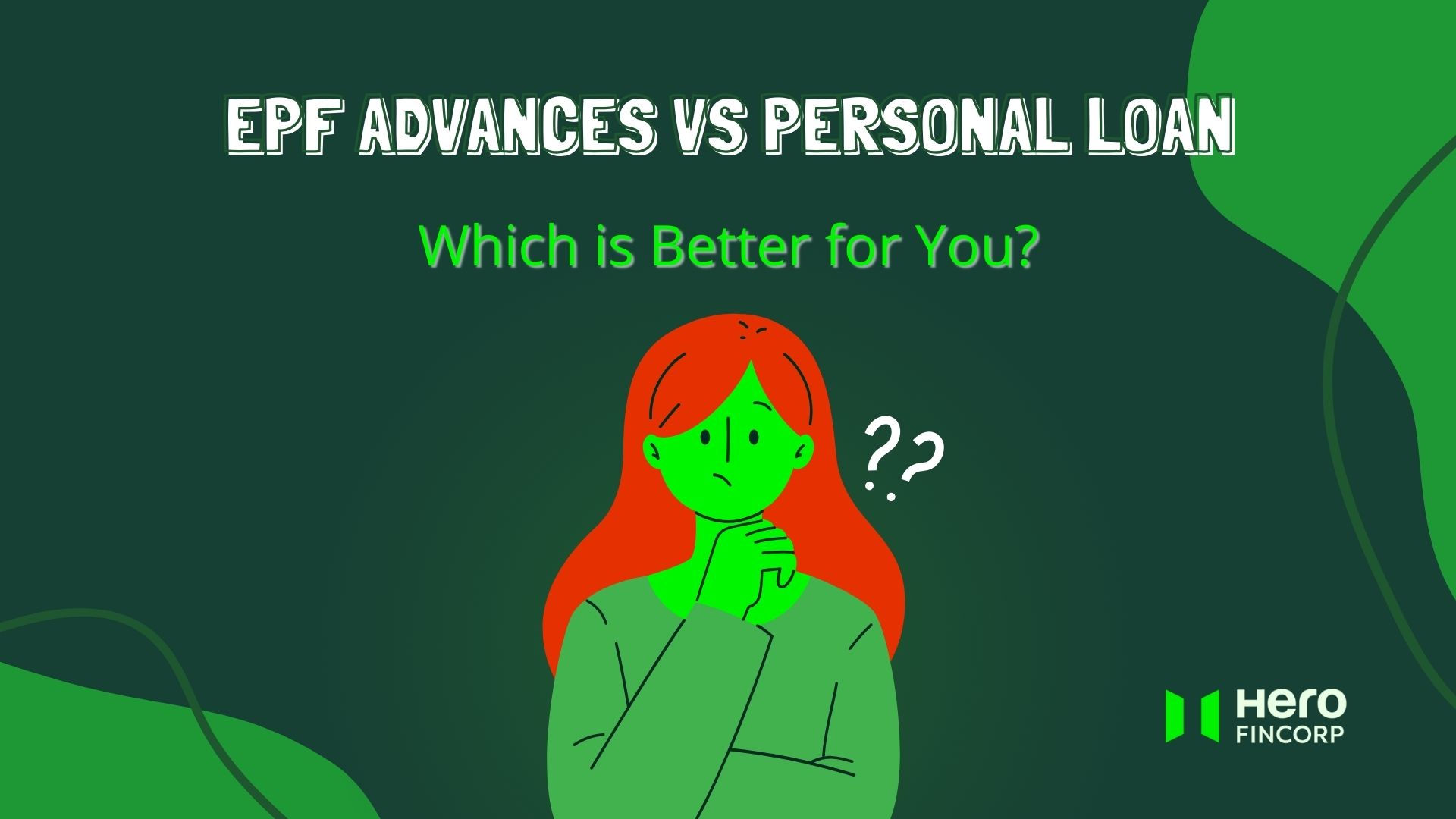EPF Advance vs. Personal Loan: Which is Better?

We've all had moments when we've needed money and needed it instantly. A medical emergency or unexpected home repairs, anything can throw your financial plans out of whack.
Such situations leave us weighing our options. We wonder, should I take an EPF advance or apply for a personal loan?
Both have their own place. They provide relief but work differently. Here's a friendly, clear-headed comparison of EPF advances vs personal loans and when each one makes sense.
EPF Advances vs Personal Loan: Side-by-Side Comparison
Here's a simple, no-nonsense breakdown of the differences between EPF advance and personal loan.
| Parameter | EPF Advance | Personal Loan |
|---|---|---|
| Eligibility & Accessibility | Only for salaried employees covered under EPFO; approval depends on years of service and balance. | Available to salaried and self-employed individuals based on income and credit profile. |
| Interest Rates | Zero interest. It's your own EPF money. | Interest applies; varies by lender, profile, and credit score |
| Application & Processing Time | Can take a few days to weeks depending on EPFO workload | Fast. Many lenders offer same-day or even instant approval. |
| Repayment Terms | No repayment needed; amount is deducted from your retirement corpus. | Fixed EMIs over a chosen tenure (12-60 months). |
| Impact on Credit Score | No impact because it's not a loan | Timely repayment helps build credit; delays hurt credit score |
| Loan Amount Limits | Restricted; depends on your EPF balance and allowed withdrawal rules. | Flexible; can go from ₹25,000 to ₹5 lakh or more depending on eligibility. |
| Usage Flexibility | Strictly defined: medical, home repair, marriage, education, etc. | Free use: travel, emergency, education, gadgets, consolidation, etc. |
| Fees & Charges | No processing fees. | Processing fees, interest, and late-payment charges may apply. |
The EPF advance vs loan comparison shows a clear theme. EPF advance is restrictive but interest-free. On the other hand, personal loans offer freedom, speed, and higher amounts. Your choice depends entirely on urgency, purpose, and long-term financial impact.
When Should You Choose an EPF Advance?
Sometimes tapping into your EPF balance makes perfect sense, but only in specific situations.
An EPF advance is ideal when you want interest-free support without affecting your credit score, and when the withdrawal purpose aligns with EPFO rules.
Here's when an EPF advance is the smarter move.
- Medical emergencies where EPFO rules allow withdrawals for hospitalisation, surgery, or long-term treatments for you or your dependents.
- No-interest borrowing since you're simply using your own money, making it ideal when you want funds without extra cost.
- Protecting your credit score because there are no EMIs, no hard enquiries, and no repayment pressure.
- Home repairs or renovations are allowed under EPFO guidelines when your property needs urgent attention.
- A healthy EPF balance with low urgency because EPF advance processing takes time and suits situations that aren't extremely time-sensitive.
- Avoiding long-term debt when you prefer keeping your monthly cash flow free from EMI commitments.
Just remember: withdrawing from EPF today means trimming your retirement savings. That's the long-term trade-off.
When is a Personal Loan the Better Option?
A personal loan shines when you need speed, flexibility, and higher loan amounts. It's not restricted by EPF rules and doesn't eat into your future savings.
Situations when a personal loan is the better choice:
- Urgent money needs since approvals can arrive within hours.
- Higher loan amounts since personal loans can stretch from ₹1 lakh to ₹5 lakh or more.
- Expenses outside EPFO rules, such as holidays, gadgets, debt consolidation, or business needs, with no usage restrictions.
- Flexible repayment through tenures ranging from 12 to 60 months.
- Building credit strength because consistent EMI payments reflect financial discipline and boost your credit score.
- Low EPF balance, especially for new employees or those with smaller savings, who cannot withdraw enough to meet their needs.
Bottom line: if you want freedom and speed, a personal loan is the dependable choice.
Also Read: Top 10 Personal Loan Uses
Applying for Personal Loan with Hero FinCorp
If a personal loan feels like the right fit, Hero FinCorp can make the experience effortless.
You get:
- A completely digital application journey
- Fast approvals and quick disbursals
- Minimal documentation
- Flexible EMIs and competitive rates
- A trusted NBFC known for transparent processes
Need a loan that adapts to your life?
Apply for a Hero FinCorp Personal Loan online today and get funds in minutes.
Making the Right Choice with Hero FinCorp
EPF advances are great when you want interest-free support for approved needs. But personal loans win when you need speed, flexibility, and higher amounts without dipping into retirement savings.
It all comes down to how urgent your need is and how much control you want over your funds.
If a personal loan feels like the smarter move, Hero FinCorp makes borrowing effortless. Apply online today and get quick access to funds when it matters most.
Frequently Asked Questions
1. What are the tax implications of EPF advance vs personal loan?
EPF advances are tax-free if withdrawn under eligible conditions; personal loans generally have no tax benefit unless used for home improvement.
2. Can I take both an EPF advance and a personal loan together?
Yes. They're independent of each other.
3. Which is faster: EPF advance or personal loan?
Personal loans, especially from NBFCs like Hero FinCorp, are much faster.
4. Can I use these funds for debt consolidation?
EPF usually doesn't allow this. Personal loans do.
5. Are EPF advances only for private-sector employees?
No. Any eligible EPFO member can apply.
6. Are there penalties for late repayment?
EPF advances have no repayment. Personal loans charge penalties for missed EMIs